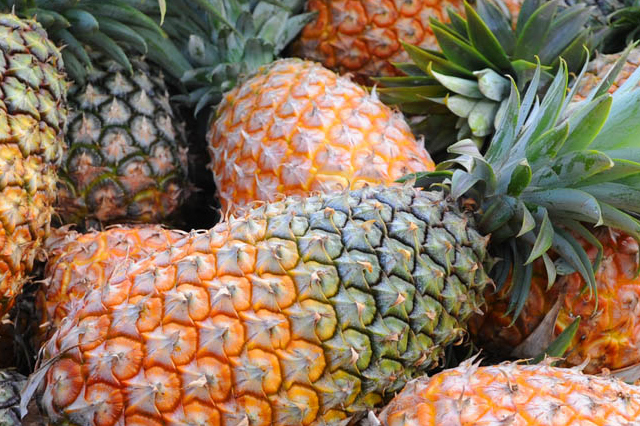
Kampala, Uganda | THE INDEPENDENT | Fruit vendors in Kampala are reaping big from the sale of pineapples.
It is common to see vendors pushing wheelbarrows selling pineapples or some of the vendors carrying them in big numbers.
Hannington Abaasa, a resident of Kisalosalo zone in Kyebando, a suburb of Kampala says that it takes patience and endurance to survive in the business. He wakes up very early in the morning and goes to different markets in Kampala city where he usually buys pineapples. At the markets, he buys pineapples at different prices depending on the size and appearance.
Abaasa says the prices of pineapples from the markets Like Kalerwe, Nakawa, and St Balikudembe where he buys them range from 300 Shillings to 2,000 shillings.
Abaasa sells 120 pineapples including, 10 small-sized pineapples at 10,000 shillings which he buys at 300 shillings and five big sized pineapples at 10,000 shillings which he buys at 1,000 shillings along Gayaza road in Mpererwe.
He says while in the market, pineapple vendors negotiate for favourable prices for different sizes to make a profit.
Muhammad Odeke, a vendor along Mawanda road says he gets a pineapple at 1,300 shillings and sells five pineapples at 10,000 shillings. From each of the sales, he gets a profit of 2, 800 Shillings to 3,000 shillings and in one day he can sell 100 pineapples.
The pineapple business is for those who have the financial capital and energy to start their own vending on the streets. Unlike Odeke, some of the street pineapple vendors in the country are hired as casual workers where they earn a wage of 10,000 shillings per day in case they meet the agreed sales targets.
Paul Talima, a student on holiday who has been hired to sell pineapples along the streets in Kyanja trading center says the cost of pineapples in Kampala is low because it is bumper harvest season and pineapples are transported to the markets from nearby Kampala in Luweero and Kayunga districts.
Talima explains that the pineapples are cheaper at the time of delivery at the market in the evenings, compared to the morning hours. He is optimistic after the bumper harvest in one month or two the cost of pineapples will raise and the number of pineapples sold will reduce to four of three per 10,000 shillings.
Since the products on sale are perishable, Talima, identifies storage problems, weather, City council authorities’ crackdowns and clients driving off without paying as some of the challenges. When it rains, according to him, the demand for pineapples goes down and some of them go stale.
********
URN
 The Independent Uganda: You get the Truth we Pay the Price
The Independent Uganda: You get the Truth we Pay the Price




I’m looking for Uganda pineapple it’s very nice